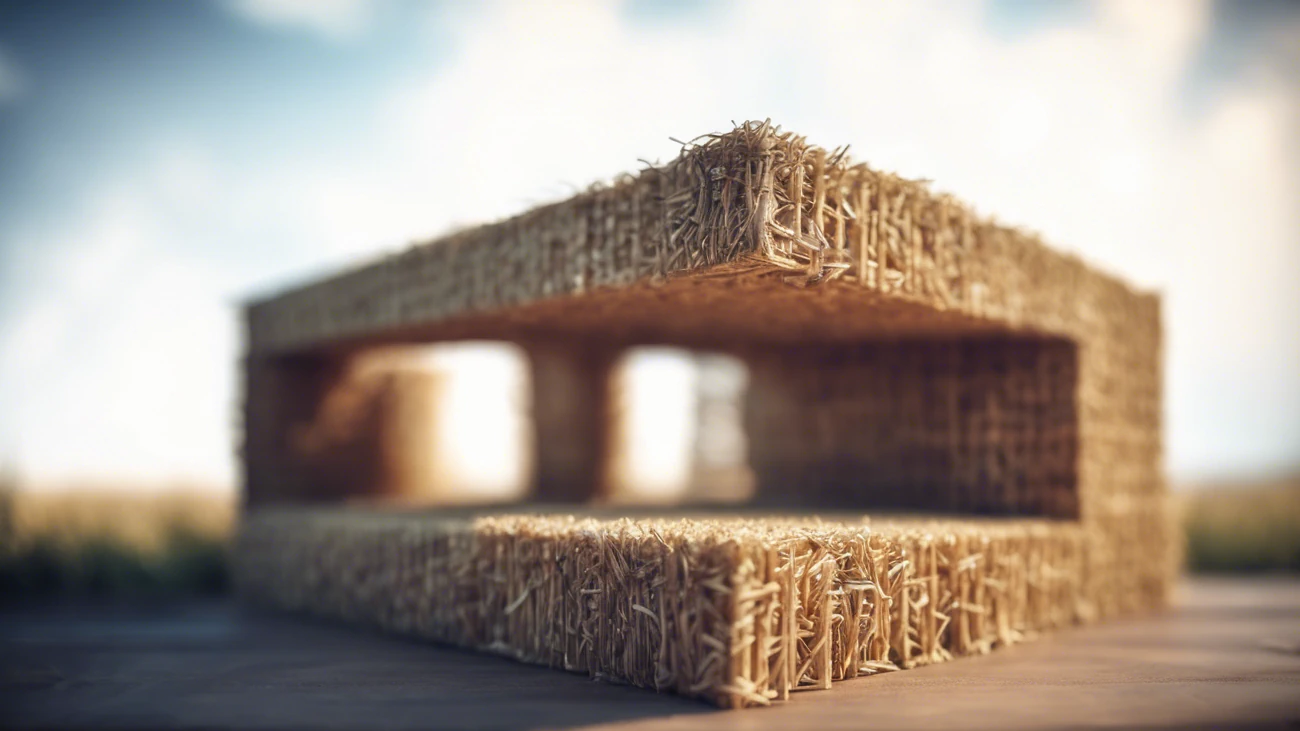Straw-bale construction stands as a testament to sustainable building practices, offering a unique blend of environmental friendliness, efficiency, and thermal performance. In this comprehensive guide, we’ll explore the rich history, diverse types, building materials used, as well as the advantages and disadvantages of straw-bale system construction.
Evolution and origins
The roots of straw-bale construction can be traced back to the late 19th century when settlers in the American Great Plains utilized straw, an agricultural waste product, to construct their homes. The technique gradually gained recognition for its insulating properties and availability of materials. However, it was the resurgence of interest in sustainable building practices in the late 20th century that propelled straw-bale construction into the spotlight.
Types of Straw-Bale construction
Straw-bale construction methods vary, encompassing load-bearing and post-and-beam systems. Load-bearing structures rely on the stacking of straw bales to support the roof and floors, while post-and-beam systems use bales as insulation within a wooden or steel framework. These methods offer flexibility in design and construction, allowing for diverse architectural styles and applications.
Building materials and adaptability
The primary building material in straw-bale construction is straw, typically wheat, rice, barley, or rye straw, tightly compacted into bales. These bales serve as an effective insulator when properly sealed and plastered, providing excellent thermal mass and insulation properties. Additionally, natural materials such as clay, lime, or earth-based plasters are commonly used to cover and protect the bales, creating a breathable and sustainable finish.
Advantages and disadvantages
Advantages:
- Sustainability: Utilizing agricultural waste as a building material promotes sustainability by reducing reliance on traditional construction materials and minimizing carbon footprint.
- Excellent insulation: Straw bales offer superior insulation properties, regulating interior temperatures and reducing energy consumption for heating and cooling.
- Renewable resource: Straw is a renewable resource, readily available in agricultural regions, making it a cost-effective and eco-friendly building material.
- Design flexibility: Straw-bale construction allows for unique architectural designs, including curved walls and artistic detailing, providing creative freedom to builders and architects.
- Fire resistance: Contrary to common misconceptions, properly plastered straw bales exhibit excellent fire resistance due to their density and compactness.
Disadvantages:
- Moisture concerns: Improper moisture management can lead to mold or decay in straw bales, necessitating careful detailing and appropriate site considerations.
- Pest infestation: Straw can be susceptible to pests such as rodents or insects if not adequately protected or treated during construction.
- Building codes and regulations: Compliance with building codes and regulations might pose challenges, as straw-bale construction methods might not be standardized or widely accepted in some regions.
- Skill and expertise: Constructing with straw bales requires specialized knowledge and skills to ensure proper stacking, sealing, and plastering techniques, which might limit widespread adoption.
- Longevity and maintenance: While properly constructed straw-bale buildings can have a long lifespan, regular maintenance and upkeep of the plaster and protective finishes are essential for durability.
Embracing the potential of Straw-Bale construction
Despite the challenges, straw-bale construction continues to gain traction as a viable, sustainable building method. Advances in construction techniques, research into moisture management, and increased awareness of its benefits contribute to its growing popularity among environmentally conscious builders and homeowners. Straw-bale construction embodies the ethos of sustainability, showcasing a harmonious blend of eco-friendliness, energy efficiency, and architectural creativity. Its ability to offer comfortable living spaces while reducing environmental impact underscores its potential to revolutionize the construction industry.
In conclusion, the exploration of straw-bale construction opens doors to a world of sustainable building practices—a world where innovation meets environmental responsibility. As the demand for eco-friendly building solutions grows, straw-bale construction stands as a beacon of sustainable design, offering a path towards a more environmentally conscious future in the realm of construction.
We will address these topics in more detail on this website, I hope you like it!
Are you still interested in this topic?
A good idea is to continue here:

